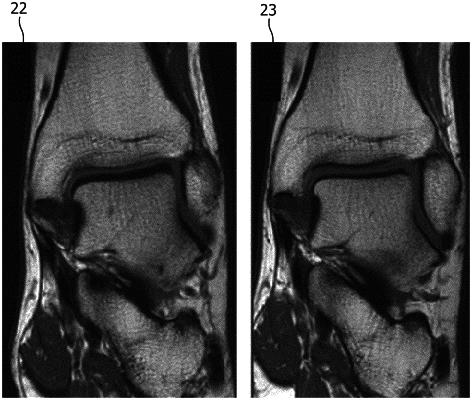| CPC G16H 50/20 (2018.01) [G06F 18/213 (2023.01); G06T 11/003 (2013.01); G16H 30/40 (2018.01)] | 10 Claims |

|
1. A non-transitory machine-readable storage medium encoded with instructions for execution by at least one processor that, when executed by the last one processor, cause the one processor to:
access raw medical imaging data generated by a medical imaging machine, the raw medical imaging data being arranged for generating a reconstructed medical image by a medical image reconstruction engine;
generate, by a dimension reduction pre-processor, one or more dimension reduced feature vectors by applying a random projection matrix to the raw medical imaging data, the generated one or more dimension reduced feature vectors respectively having a resultant dimensionality that is a subspace of a raw dimensionality of the raw medical imaging data; and
generate, by a trained artificial intelligence engine accessing the generated one or more dimension reduced feature vectors, a diagnostic assessment of the raw medical imaging data, wherein the trained artificial intelligence engine is trained by:
associating training input vectors with one or more respective corresponding classification labels, the classification labels each defining a negative classification and a positive classification;
for a respective classification label, defining a weighting matrix corresponding to a hyperplane separating the negative classification and the positive classification; and
normalizing the size of the defined weighting matrix subject to the constraint that the labelled training samples are satisfied.
|